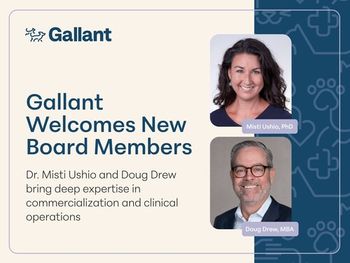
A booming cattle market may provide more resources for bovine practitioners
National Report - While the cattle herd has shrunk over the years as grazing space dwindles, there are new signs of optimism in the market.
NATIONAL REPORT — While the cattle herd has shrunk over the years as grazing space dwindles, there are new signs of optimism in the market. According to the Livestock Marketing Information Center, 2011 has proved to be a banner year thus far for cattle prices.
Kansas 500- to 600-lb. steer calves were priced, on average, at $146 per cwt for the first six weeks of 2011, $34 per cwt above the same period a year ago. Prices were up for Kansas yearlings steers as well, which range from 700- to 800-lbs.
"It appears much of the seasonal price strength in calf and yearling prices has come earlier than normal in 2011," LMIC noted in a February report. While corn prices are high, which usually narrows the prices of feeder and slaughter steers, that high feed cost is not dampening the market as much as expected this year. "Even with higher costs of production, very strong calf prices this fall will translate into continued improvement in cow-calf returns," the report said.
At the annual Agriculture Outlook Forum in late February, U.S. Department of Agriculture officials credited agricultural exports for the price increases. Secretary Tom Vilsack noted that 2011 U.S. agricultural exports are projected at a value of $135.5 billion, a 25-percent increase over last year. Agricultural trade is expected to have a surplus of $47.5 billion in 2011 as well.
However, continued price strength in the cattle market may also be contingent on a very large corn crop, which would drop the price of the essential feedstuff.
When more money is available to producers as prices climb, bovine practitioners typically have more resources at their disposal, notes Dr. M. Gatz Riddell, Jr., executive vice president of the American Association of Bovine Practitioners.
"With the value of an animal being increased, it increases both the practitioner's and owner's options as far as treating an animal versus having to euthanize it for something that might otherwise be treatable," he says. "If an animal has a lameness that could be treated with surgery or antibiotics, if the value of the animal doesn't warrant treatment, they might (not be treated)." However, he says, as prices increase, "an animal may be more likely to be treated than removed from the herd."
But it's not only treating animals that can get a boost, preventive medicine may also have a greater emphasis.
"Preventative vaccines may be easier to justify in a stronger market, or there could be a higher level of nutrition," says Riddell.
Minerals and vitamins are expensive components of cattle feed rations, and more money can help ensure animals are getting what they need.
"A producer might be more inclined to use a diagnostic tests to test trace minerals," Riddell notes. "For selenium, for example, a blood sample is not good enough. You need a liver biopsy. That might not be something (producers) are doing in tight times."
Moreover, testing feed to ensure the makeup is proper for the animal helps DVMs keep cattle healthy.
"If you don't do an analysis, which is not free, you're not exactly sure what you're feeding (the animal)," he says. "A lot of tests may have to be dropped to stay in business when the market is weak."
While there is much cause for optimism among livestock producers as prices climb, Riddell cautions that the money may not be flowing as easily as water from the tap. "Because of the increased demand for corn, feed prices are going up, too," he says. "This is not just a windfall-profit-type situation."
Ms. Karapetian is a freelance journalist in Chicago.
Newsletter
From exam room tips to practice management insights, get trusted veterinary news delivered straight to your inbox—subscribe to dvm360.






